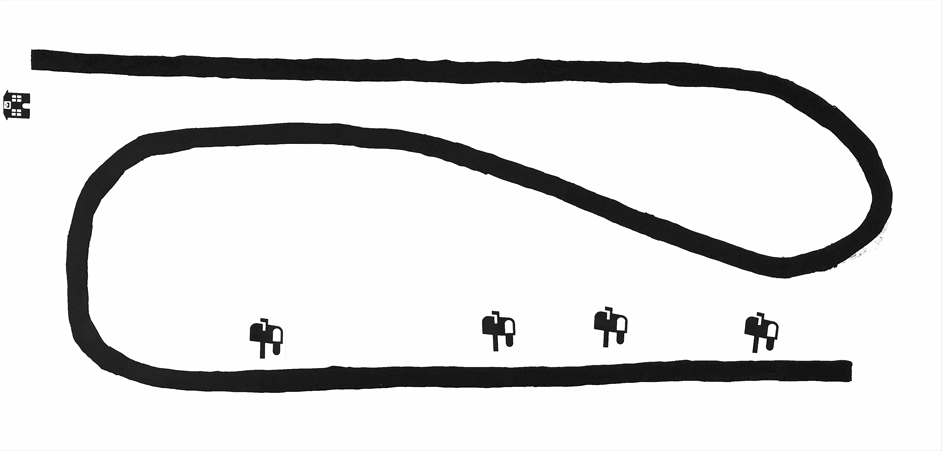You've Got Mail Tabletop Challenge.
Mission Statement
This robotic competition is intended to promote friendly competition and encourage group participation in the robotics hobby. Design constraints are few (robot size limited by the tabletop space.) Innovation is welcome and to be expected. Enjoy!
Phase 1: Driver Training - Drive the Route
Build a device that will follow a line to the end and return to the start, coming to a complete stop. Timing starts once the robot begins to move and stops when the machine comes to a complete stop. Two timed attempts per entrant is allowed. Lowest time wins this portion of the challenge. Robots that do not start within 30 seconds of the operator's startup routine are disqualified.
Phase 2: Deliver the Mail
For the second challenge, the same route will be used as in the first phase. Now that your mailman has an understanding of the "route", the actual task of delivering the mail will take place. Four addresses will be added to the route and the machine will be required to deliver the correct mail to the correct address. One of the addresses will be supplied, at random, in advance, to the mailman (device) prior to contest start. The mailboxes may appear on either side of the line.
The four addresses will be at known distances from the end of the line. The mail, a standard size business card, will be supplied to the participant before the start of the mail run in order to be affixed to the robot in such a way to allow accurate mail deployment. The robot is expected to drive from the Post Office to the end of the route, turn or backup, deliver the mail and return to the Post Office, coming to a complete stop. As in the first phase, two timed attempts per entrant are allowed. The lowest time wins this portion of the challenge.
Playing Field
The challenge is played on a white board that sits on top of a table (or floor if tables are not available). The dimensions of the board are approximately 48 x 24 x 1/4 inches.
The line is approximately 1 inch wide and is painted with a matte black paint. (Alternatively, a 3/4 inch black electrical could be used.) The line will maintain a minimum distance of 3 inches from the edge of the board except at the beginning and end of the line which may be shorter. Skratches in the black line could expose some of the white board board. Judges will do their best to keep the board free of skratches and debris. However, your robot should be rebust enough to handle small skratches, defects, and debris on the board.
A small graphic of a post office designates the starting and finishing end of the line. The exact course of the line isn’t necessarily published and could change before the competition. At the discretion of the judges, an alternate board could be used if the primary board proves too problematic for a “friendly competition”.
Robots for this challenge should be small, due to limited available space. Ideally, the robot wheel base, including casters, should fit within a 3 inch radius. Otherwise, wheels or casters may slide off the board, causing the robot to become stuck or to slip. Upon approval from the judges, competitors may place support planks of similar thickness near any problem areas on the competition board to help keep larger robots on the board.The robot should be able to make tight turns. Competitors may test and tune their robot to the competition track before the competition.
Example board:
